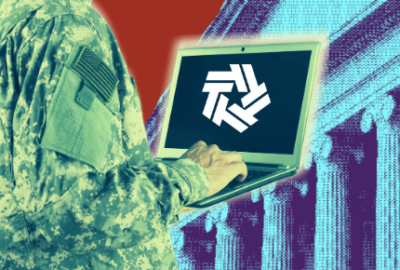

House Majority Leader Steny Hoyer (D-Md.) suggested giving the IRS $2 billion under the Technology Modernization Fund and then letting agencies use the savings from...
And now for an entirely different idea to modernize federal technology. What if Congress gave the IRS $2 billion to move off legacy systems and the savings from the tax agency would go back into the governmentwide Technology Modernization Fund?
That is the idea from Rep. Steny Hoyer (D-Md.), the House majority leader.
Hoyer sent a letter to Steven Mnuchin, the secretary of Treasury, on July 31 proposing to merge the TMF with the line item for IRS modernization funding.
“Since the funds will be administered through the TMF, the long-term cost savings resulting from the IRS upgrades would be reinvested through the TMF’s competitive revolving fund model into other urgently needed federal technology upgrades, including the Treasury Department, the Small Business Administration, and other agencies,” Hoyer wrote. “That TMF model has already proven effective through three years of success.”
Hoyer said House Democrats included $1 billion in the HEROES Act, which it passed on May 15, for TMF, and the Trump Administration and Senate Republicans included $2 billion for technology upgrades specifically for the IRS in the legislative package proposed on July 27.
“I hope you will consider this suggestion, which would go a long way toward eliminating barriers to the effective implementation of our COVID-19 relief programs and help modernize government systems more broadly,” Hoyer wrote. “The American people deserve a government possessing the latest technology that enables it to serve them to the highest level of efficiency and ability.”
This proposal differs greatly from those of Hoyer’s colleagues in both chambers.
Sen. Chris Van Hollen led an effort on July 29 to convince Appropriations Committee leaders to match the House allocation of $1 billion for the TMF.
Over on the House side, Reps. Gerry Connolly (D-Va.), Carolyn Maloney (D-N.Y.) and 11 other Democrat lawmakers sent a letter to House leadership and the Appropriations Committee chairman and ranking member asking to include $1 billion for the TMF in the latest stimulus bill.
The TMF Board also made its 10th loan under the program to the U.S. Customs and Border Protection directorate on July 28.
And talking about an agency with a lot of technical debt and one that Congress keeps sending more money to, the Department of Veterans Affairs may be getting new marching orders from lawmakers.
The Senate passed the Veterans Affairs IT Reform Act last week in an effort to “bring more accountability and oversight to the office within VA charged with delivering IT projects critical to providing care and benefits to millions of veterans and their families across the country.”
The bill requires increased transparency into proposed and current IT spending on critical programs for veterans at VA, while also directing VA to institute a number of outstanding Government Accountability Office (GAO) recommendations related to planning, management and operation of its Office of Information and Technology (OIT).
Sens. Marsha Blackburn (R-Tenn.) and Jon Tester (D-Mont.) sponsored the bill that now heads to the House for consideration.
The bill would:
While the bill authorizes no more funding, VA’s IT budget is more than $4.3 billion, and according to the federal IT dashboard, 88% of its projects are on schedule, but only 52% of its projects are on budget.
The challenges the agency has faced over the last 15 years are well documented. Another bill telling VA to comply with existing laws and policies from OMB seems a bit ironic. If VA didn’t or couldn’t comply the first time, why do Tester and Blackburn believe a second mandate will matter? Maybe a better approach would be to hold monthly oversight hearings or briefings like the committees did after the VA’s massive data breach in 2006. That both got leadership’s attention and prompted real change.
Copyright © 2025 Federal News Network. All rights reserved. This website is not intended for users located within the European Economic Area.
Jason Miller is executive editor of Federal News Network and directs news coverage on the people, policy and programs of the federal government.
Follow @jmillerWFED



